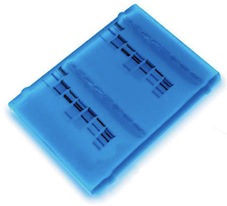In the summer of 1998, an elderly Indiana woman was brutally assaulted. In the predawn darkness, she didn't get a look at her assailant's face.
At first light, police found a man only a few blocks from the victim's house. He was unconscious, his clothing was stained with blood, and there were scratches on his forearms. The man claimed that he had passed out following a drunken brawl. He couldn't remember what had happened afterward. The blood type of the stains on his clothing matched the victim's blood type. The police thought they had their man.
Hours later, after more testing of the evidence, the police knew they had the wrong suspect. They resumed their search for the attacker, who was subsequently caught, tried, and convicted. What kind of evidence do you think investigators collected at the crime scene? What kinds of tests would they have run on this evidence? As you read this chapter, look for clues about the techniques that helped the police determine they had the wrong suspect. Then, solve the mystery.





